Top Restaurant Scheduling Software in 2024
Scheduling software keeps your staff on track.
Top Restaurant Scheduling Software in 2024
Scheduling software keeps your staff on track.
Authentic reviews
Real restaurateurs
Software help
Employee scheduling is one of the largest challenges that restaurants face, with last-minute time-off requests, unexpected shift changes, and communication gaps being all too common. Software providers have closely listened to the challenges faced by the industry, and in response have developed software solutions specifically crafted to meet the unique needs of restaurants.
The best scheduling software makes it easy for restaurant managers to create and maintain employee schedules, track labor costs, and communicate with their employees through notifications and chat messaging. The software also gives employees the ability to easily clock in and clock out and swap shifts with other staff members.
The 5 Best Restaurant Scheduling Software for 2024
To help find software that best handles scheduling and staffing needs, we put together a list of the top restaurant scheduling software providers.
The top 5 scheduling software providers for restaurants in 2024 are:
Best Overall
7Shifts
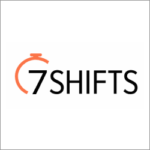
7Shifts stands out as an intuitive platform that has been built specifically for the restaurant industry. Its best-in-class scheduling features are robust yet easy to use. And beyond scheduling, the platform provides additional capabilities for payroll, hiring, training, and employee engagement. We also like the task management feature which lets managers assign tasks to employees, all within the app.
Best for Multi-Unit Restaurants
Homebase

Homebase offers an excellent scheduling platform that can be combined with payroll to greatly simplify operations for restaurants with multiple locations.
Best for Small Restaurants & Cafes
ZoomShift

ZoomShift is priced at a per employee rate which is a cost-effective option for smaller restaurants and cafes with fewer employees. Even at this lower price, customers get access to ZoomShift’s more advanced scheduling features.
Best for Large Chains
Jolt
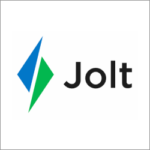
Jolt is widely used among large chain restaurants including Chick-fil-A and Buffalo Wild Wings. In addition to scheduling software, it offers a number of other products around operations excellence, such as employee performance management and food safety tools, that appeal to chains.
Best Free Plan
Sling

Sling offers a free plan that supports unlimited employees, managers, and locations. The free plan includes all the basic features plus some benefits that other free plans don’t have such as shift templates that help improve efficiency.
All Scheduling Software Rankings

★
(0 reviews)

★
(0 reviews)

★
(0 reviews)

★
(0 reviews)

★
(0 reviews)

★
(0 reviews)

★
(0 reviews)

★
(0 reviews)
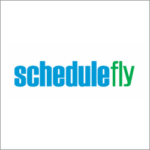
★
(0 reviews)

★
(0 reviews)

★
(0 reviews)
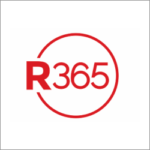
★
(0 reviews)
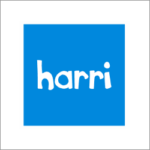
★
(0 reviews)
What Is Restaurant Scheduling Software?
Restaurant Scheduling Software is a digital tool designed to streamline the process of creating and managing employee schedules in the restaurant industry.
Restaurants face unique challenges in employee scheduling, such as high call-out rates and unexpected shift changes. To handle these unique needs, vendors have created scheduling software that’s designed specifically for the restaurant industry.
In addition to basic scheduling features, the strongest software functions as a communication platform that allows managers and staff to stay in touch with each other. Managers use these tools to send out important updates and notifications to staff members in an efficient and scalable way.
For employees, the software simplifies various administrative tasks, including clocking in and out, managing shift swaps, updating their availability, and submitting time-off requests.
Restaurant scheduling software has a lot to offer restaurants. Here’s a detailed breakdown of the main features that you can expect the best restaurant scheduling software to provide:
Employee Scheduling
The main function of this type of software is to offer a more streamlined and efficient way to manage restaurant staff scheduling than the traditional pen-and-paper method.
The software is typically designed as a calendar view that has drag-and-drop functionality that allows users to build schedules with ease.
Managers create schedules by easily assigning individuals to their shifts. The process is automated and takes into account staff availability and preferences. For example, a staff member can request to avoid working on specific days, and the software makes sure that this person isn’t scheduled on the days they’ve indicated they’re unavailable.
Once a schedule is complete, the manager can publish it and make it instantly available to all employees. Staff then use the software to view the schedules and keep up to date on any changes.
Time Tracking and Attendance
The software sometimes provides an app that employees use to clock in and out.
This information is saved in the system so that restaurant owners and managers can track it over time which helps assess staff punctuality and attendance.
Shift Swapping
Employees can perform shift swaps directly within the app by opening a request for someone to fill in for their shift. Once a request is made, other employees are notified and can evaluate the shift to determine if they’d like to fill in.
Managers can still maintain some control by requiring approval for shift swap requests, which helps ensure that the right staff is filling in.
Automated shift swaps take some of the burden off of management by making the process more hands-off.
Communication Platform
In addition to scheduling features, the strongest software functions as a communication platform that allows managers to stay in touch with employees by sending updates or news through notification alerts, direct messaging, and group chatting.
Rather than having to email or text employees, which can be chaotic, messages are sent directly within the scheduling software.
Some software provides “read” notifications so that managers can ensure that individual employees have received and viewed important messages.
Payroll & Tip Management
Many vendors also bundle payroll functionalities with their scheduling software.
Some vendors have designed these features specifically for restaurants and handle the industry’s unique needs around paying their employees. They solve restaurant-specific payroll challenges such as managing tips, labor compliance, union fees, and tax calculations.
Such comprehensive payroll systems not only streamline wage calculation but also simplify the distribution and taxation of tips through features like tip pooling and automated payouts.
Tip management features such as tip pooling and tip payouts are especially relevant for restaurants, and this type of software greatly simplifies how restaurants manage and distribute tips.
Tip pooling features allow restaurant managers to create customizable tip pools. The software may allow the creation of multiple pools, defining the sources of tips, specifying which roles receive tips from the pool, and how the distribution is calculated.
Tip payout features allow direct payment of pooled (and non-pooled) tips into employees’ banking accounts. The tip payouts can integrate with payroll to automatically deduct taxes, which streamlines the entire process.
POS Integration
Some scheduling software integrates with POS systems for accurate sales forecasts, which helps managers create schedules with the right level of staffing to meet customer demand.
Reporting & Analytics
One of the largest benefits of using scheduling software is that it provides reporting and analytics features that give restaurants insights into labor and staffing trends. Monitoring this kind of information helps restaurants make more informed staffing and operational decisions.
The software helps restaurants with the following types of insights:
- Labor Cost Tracking: Monitor labor trends and view a breakdown of labor costs vs. revenue. These types of reports let restaurants identify ideal staffing levels while staying on budget. The software often syncs with point-of-sale systems to allow for labor forecasting, which helps to schedule the right level of staffing and prevent overspending.
- Monitor overtime: The software has reporting that displays trends in overtime among employees.
- Employee Performance Metrics: Track employee punctuality, reliability, and absenteeism.
- Schedule Adherence Reports: Insights into how closely actual work hours align with scheduled hours.
- Shift Swap Reports: Overview of shift swap frequency and patterns among staff.
- Time-off Requests: Data on the number and type of time-off requests submitted and approved.
Benefits of Scheduling Software
Scheduling software benefits restaurants by helping them to manage schedules and control labor costs.
Here’s a full breakdown of the benefits of this software:
Lower Labor Costs
Scheduling software is quite beneficial for restaurants looking to manage labor costs effectively.
It tracks labor costs and may use historical data to predict how many staff members are needed, which helps managers avoid overstaffing and understaffing. It also keeps an eye on overtime and helps spot areas where staffing could be optimized.
These insights allow for creating schedules that align labor costs with revenue, giving managers the tools they need for smarter staff planning that keeps costs in check.
Save Time on Scheduling
Without scheduling software, restaurant managers dedicate a substantial amount of time manually creating schedules, a process that can be tedious and time-consuming.
With scheduling software, this task becomes significantly more efficient by allowing managers to quickly create and publish schedules. The software automatically keeps track of staff availability and scheduling preferences, which allows restaurant managers to quickly know who’s available for shifts. The software further enables time-savings by giving the ability to reuse scheduling templates on a weekly basis to save even more time.
Make Schedule Changes in Real-Time
Last-minute schedule changes are one of the biggest headaches of managing a restaurant’s schedule. The software helps here by enabling real-time schedule adjustments, allowing managers to quickly update shifts and notify staff immediately through alerts and notifications.
If a staff member calls out sick, restaurant managers can use the software to quickly request a different employee for the shift. The request can be sent to multiple employees at one time, which means the manager doesn’t need to individually call or text employees. Once the request is sent, staff receive it right away and can decide if they’d like to take on the shift.
More Efficient Time-Off and Shift Swap Requests
Restaurant scheduling software simplifies the management of time-off and shift swap requests, making it more manageable for both employees and managers.
The software often comes with a mobile app that employees can use to submit requests on their own time. The software alerts managers to these requests who can then approve or deny them based on staffing needs.
Better Communication
Scheduling apps improve communication by making schedules, updates, and shift changes available to all staff in real-time. As soon as anything within the schedule changes, managers can notify employees through the app.
Rather than having to reach out to employees through text messages and phone calls, the apps have built-in messaging systems that are used to communicate with staff. These are more efficient and enable a more professional means of communication with employees.
Managers can also send out mass notifications to all staff at one time, which makes sure that everyone’s on the same page.
Simplified Payroll
Some scheduling software also offers payroll capabilities. If the two are integrated, a restaurant can expect to greatly streamline payroll processes by automating wage and tip calculations, tracking hours, and ensuring compliance with labor laws.
By having an integrated scheduling and payroll system, restaurants keep data within one single source of truth. This results in more accurate data and fewer payroll errors.
Increase Employee Satisfaction
Restaurant scheduling software improves employee satisfaction by giving staff control over their schedules. They can easily set availability, swap shifts, and request time off from directly within the app.
This gives employees a sense of autonomy over their work-life balance and creates a more positive working environment.
Data for Better Decision-Making
Restaurant scheduling software offers valuable data and analytics for informed decision-making.
By analyzing data on labor trends, peak hours, and staff performance, restaurants can refine scheduling and identify areas for improvements and cost savings.
This data-driven approach gives managers the ability to make more confident decisions that support higher profits for the business.
How to Choose the Right Restaurant Scheduling Software
When selecting scheduling software for your restaurant, there are a few key factors to consider.
Here are a list of questions to ask when evaluating potential vendors:
How complicated is my restaurant’s scheduling process?
The first step to choosing scheduling software is to determine how complicated your schedule management really is.
A multi-chain restaurant with employees that work across locations will have a much more complicated scheduling process than a small cafe with a few employees.
Different vendors work better for different levels of complexity. Consider your restaurant’s number of locations, number of employees, and whether or not you schedule individuals across multiple locations.
When evaluating vendors, ask them how their scheduling software would benefit your restaurant’s specific operational needs.
Is the software easy to use?
Software should make creating schedules easier.
Be sure to try it for yourself to make sure that it’s easy to use. Many providers offer a free trial that lets you evaluate how well it works for you.
The software should also be intuitive for staff. Reviewing schedules, clocking in and out, and swapping shifts should all be seamless. If the software’s not easy for your staff to use, they’ll need additional training and might resist the process.
Does the software integrate with my current point-of-sale system?
Check to make sure that your current point-of-sale system can be integrated with the scheduling software.
By integrating your POS data with scheduling software, you’ll gain the benefit of aligning actual sales data with labor scheduling. This enables more accurate labor forecasting, which helps to ensure that the staffing levels you set match customer demand without overspending on labor.
Which scheduling features are important to you?
When evaluating scheduling software, consider the specific features that are important to you. The most important scheduling features to evaluate include:
- Automated schedule creation that considers staff availability and preferences.
- Shift swap and time-off request management.
- Real-time notifications for schedule updates.
- Labor cost tracking and forecasting.
- Integration with POS and payroll systems for data consistency.
- Mobile app accessibility for on-the-go schedule management.
- Reporting and analytics tools for data-driven decision-making.
Do I want the software to include payroll capabilities?
Some scheduling software also offers the ability to manage payroll. When evaluating scheduling software, decide if you want it to include payroll.
Having payroll bundled with scheduling software creates more efficiencies for restaurants such as automating wage and tip calculations and ensuring compliance with labor laws.
If you already have a separate payroll system and are happy to continue using it, check if the scheduling software integrates with your payroll platform. This will ensure that data stays synced between the two systems.
Do I need advanced features such as forecasting capabilities?
Some of the more advanced providers have sales and labor forecasting features that help managers predict the level of staffing needed for a particular day.
These features are helpful for larger restaurants with more complex staffing arrangements but might not be needed for smaller operations.
Does the software have strong labor tracking and analytics tools?
Tracking labor and making data-driven decisions will help your restaurant reduce staffing costs.
Evaluate if the software helps you understand the following:
- Track labor vs revenue: Does the software provide reporting of labor costs against revenue? This is one of the most important reports that this software should provide since it helps restaurants identify the right staffing levels and stay on budget.
- Employee tracking: Does it track employee performance around punctuality and reliability? Does it track shift swaps and time-off requests over time? This data gives a lens to evaluate which of your staff members are the highest performers.
How much does the software cost?
Finally, the cost of scheduling software should be within your budget while still delivering good value.
For smaller restaurants with less complex scheduling needs, a number of software providers offer a free plan. Although these free plans typically come with a limited set of features, they may be enough for your restaurant.
Consider the following areas when evaluating costs:
- Flat Monthly Fee or Per User Fee: Some software is priced at a flat monthly rate for an unlimited number of users, while other software is priced at a per-user rate.
- Multi-Location Pricing: Does it cost more if you have multiple locations? Some providers charge a monthly rate per location.
- Tiered Pricing: Does it have different tiers of features with different levels of pricing? Some scheduling software has a more cost-effective entrance price, but the features may be too limited for your needs.
- POS and Payroll Integrations: Some software providers require restaurants to purchase their more expensive plans in order to integrate scheduling with POS and Payroll.